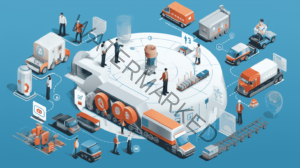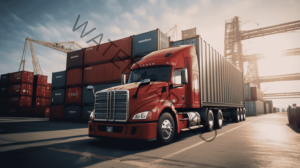When it comes to freight transportation, businesses often face the dilemma of choosing between LTL and FTL Trucking. Understanding the key differences and knowing how to pick the right shipping option is crucial for optimizing logistics solutions.
Differences between LTL and FTL Trucking
1.Size and Weight Requirements:
LTL: Suitable for shipments that don’t fill the entire truck, typically less than 15,000 pounds.
FTL: Ideal for large shipments that occupy the entire truck, usually over 15,000 pounds.
2.Cost Considerations:
LTL: Cost-effective for smaller shipments, as you share truck space and expenses with other businesses.
FTL: Generally more expensive but offers cost savings for large shipments without sharing space.
3.Transit Time and Delivery Speed:
LTL: Longer transit times due to multiple stops to accommodate other shipments, suitable for less time-sensitive cargo.
FTL: Faster transit times as the truck travels directly from origin to destination, ideal for time-critical goods.
Factors to Consider when Choosing Shipping Options
1.Freight Volume and Weight
Analyze your shipment size and weight to determine if it meets FTL requirements or if it’s more suited for LTL transportation.
2.Delivery Timeframes
Consider the urgency of delivery and the impact of transit times on your business and customers.
3.Budget Constraints
Evaluate the available budget and cost-effectiveness of each option to ensure it aligns with your financial capabilities.
4.Destination and Route Complexities
Assess the delivery destination, route complexities, and accessibility to determine the most suitable shipping option.
Advantages of Less Than Truckload (LTL) Shipping
1.Cost Savings for Small Shipments
LTL allows you to share transportation costs with other businesses, making it economical for smaller loads.
2.Increased Flexibility
With LTL, you have the flexibility to ship varying shipment sizes without the need to fill an entire truck.
3.Reduced Environmental Impact
LTL reduces the number of trucks on the road, contributing to lower carbon emissions and a greener supply chain.
Benefits of Full Truckload (FTL) Shipping
1.Faster Transit Times
FTL offers direct delivery, resulting in quicker transit times, which is vital for time-sensitive shipments.
2.Enhanced Security for High-Value Goods
As FTL shipments don’t have other cargo sharing the truck, there’s a reduced risk of damage or loss for valuable items.
3.Ideal for Large Shipments
FTL is the preferred choice when shipping substantial quantities of goods, ensuring efficient handling and delivery.
How to Choose the Right Shipping Option
1.Analyzing Shipping Needs
Assess your shipment characteristics, delivery deadlines, and budgetary constraints to determine the most suitable option.
2.Requesting Quotes from Carriers
Obtain quotes from various carriers for both LTL and FTL options, comparing costs and services offered.
3.Evaluating Additional Services
Consider additional services offered by carriers, such as tracking capabilities, insurance, and specialized handling.
Implementing the Chosen Shipping Option
1.Packaging and Labeling Guidelines
Follow packaging and labeling guidelines provided by the carrier to ensure safe and efficient handling of your shipment.
2.Documentation and Paperwork
Complete all necessary paperwork accurately to avoid delays and ensure smooth customs clearance.
3.Tracking and Monitoring the Shipment
Utilize tracking tools to monitor your shipment’s progress and address any potential issues proactively.
Conclusion
In conclusion, choosing the right shipping option, whether LTL or FTL Trucking, depends on various factors such as shipment size, budget, and delivery urgency. By carefully analyzing your logistics needs and understanding the benefits of each option, you can make an informed decision that optimizes your freight transportation and enhances your overall supply chain efficiency.






